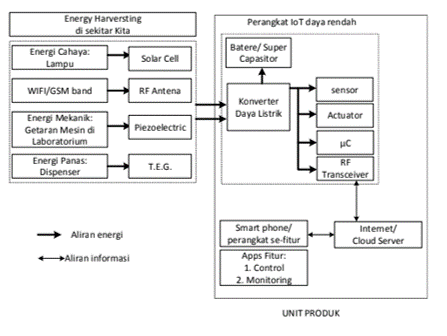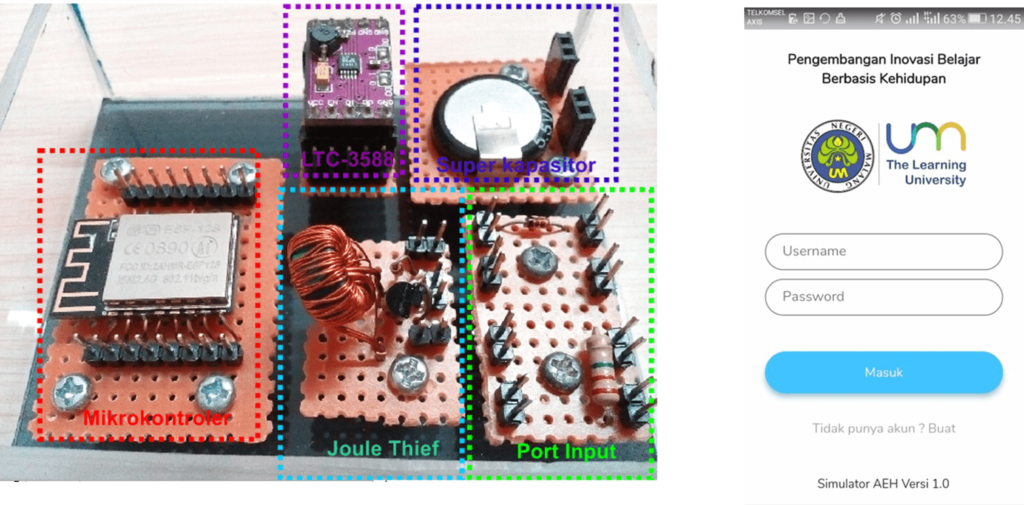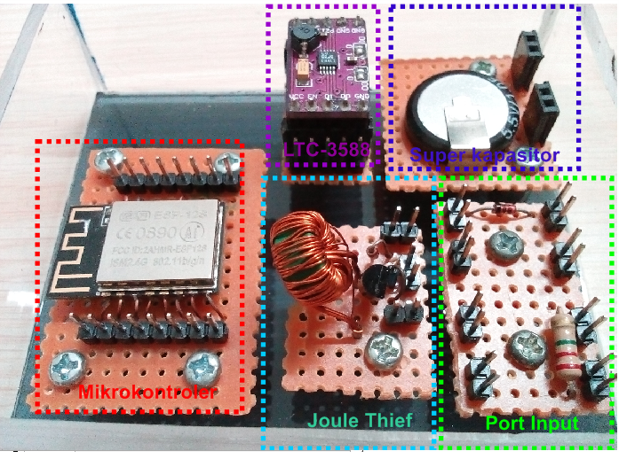Year. 2018
Funding sources: ISDB & UM (Inovbel 2018)
Wining 1st place in a competition
Title project: PENGEMBANGAN SIMULATOR AMBIENT ENERGY HARVERSTING BERBASIS IoT
Team:
ARIPRIHARTA, ST., MT., PhD.
DR. ENG. ANIK NUR HANDAYANI, ST., MT.
ARIF NUR AFFANDI, ST., MT, PhD.
QUOTA ALIEF, ST. MT.
Project Descriptions:
Waste energy (ambient energy) around the Malang State University campus area, especially the G4 Electrical Engineering Building has enough potential to be reused in form of electrical energy. The electrical energy that has been harvested from the surrounding energy is then managed efficiently and effectively using low power converters to be able to supply sufficient electrical power to sensor devices, actuators such as electric motors, and RF transceivers for IoT or WSN data communication. Implementation of ambient energy Harvesting can be found in various industrial sectors, ranging from military, agriculture, health and medical, and transportation.
Utilizing ambient energy harvesting for IoT is also in line with the map competencies needed to compete in the Internet of Things (IoT) Industry in Gronau (2017). In order to prepare professionals who are able to compete
especially in the field of IoT, we propose “ambient simulator development” IoT-based energy harvesting”. The virtue of this simulator is multi-sources, features IoT-based control & monitoring, smartphone application interface, and connection with cloud server so that it can be accessed widely, cheaper than demo kits on the market. It is hoped that the product to be developed will be used by Prodi Electrical Engineering, especially Lab. Electronics for IoT-based practicum activities.
Product:


Features:
- Convert ambient energy to electrical energy for IoT unit power supply
- Carry out control and monitoring actions based on low power IoT through
internet/cloud - Mapping ambient energy in the TE-FTUM building
- Control of low power actuator devices, such as dc motors or LEDs
- Monitoring of power, current and voltage conversion from the device
energy converter (solar cell, etc.) - Monitoring the power, voltage, current output of the electric power converter as a result of
ambient energy harvesting - Data communication with cloud servers
- Smartphone-based application interface (android)
Test:

Findings:
- Based on the validation results from media experts and material experts, the final data obtained were 91.02% for design experts, 86% for media experts, and 82.7% for material experts.
- The average result obtained from these three validators is 87.59%.
- This simulator as a whole can be declared valid, feasible and does not need to be revised with an average score of 86.59%.
- Based on the results and the pretest obtained an average of 47.06 and posttest 88.06%, and the test questionnaire for student use is 85.94%.
- Enthusiasm to access learning vision is quite good where the highest access is at stages 3 and 4.
Certificate
